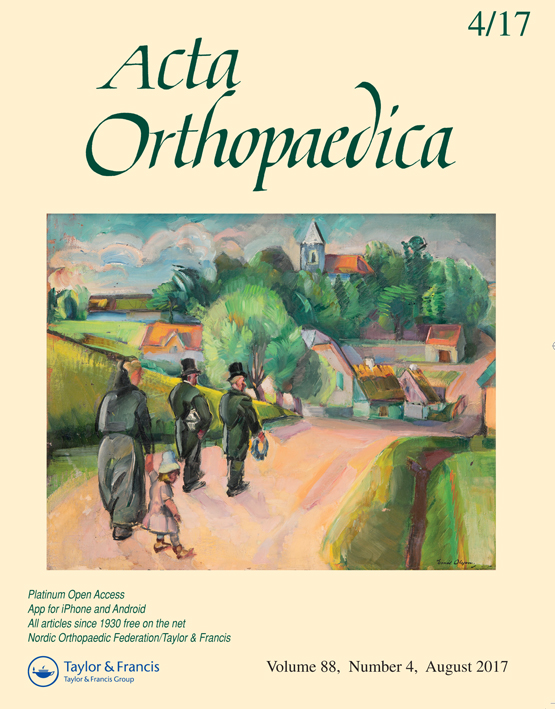Similar 1-year subjective outcome after a distal radius fracture during the 10-year-period 2003–2012
DOI:
https://doi.org/10.1080/17453674.2017.1303601Abstract
Background and purpose — During the last decades, treatment of distal radius fractures (DRFs) has changed, with surgical intervention being more common and with new techniques. We investigated whether this change has influenced the subjective outcome. Here we report, year by year, the 1-year score after a DRF over a 10-year-period, using a patient-reported outcome measure. Patients and methods — Patients aged 18 years or more with a DRF between 2003 and 2012 were prospectively and consecutively registered in a longitudinal outcome database. 1 year after the fracture, all the patients were sent a validated subjective outcome questionnaire, the Disabilities of the Arm, Shoulder, and Hand (DASH). The lower the score (0–100), the better the outcome. Results — Between 2003 and 2012, 3,666 patients (2,833 of them women; mean age 62 (18–98) years) were included. 22% were operated and the rate remained constant over the years. The surgical methods shifted from external fixators (42%) and fragment-specific plates (45%) in 2003, to mainly volar locking plates (65%) in 2012. 70% of the patients responded to the 1-year DASH questionnaire. The median DASH score was 9 (IQR: 2–25) for the cohort, both in surgically treated patients (9 (IQR: 3–25)) and in non-surgically treated patients (9 (IQR 2–27)). Subgroup analysis showed a higher median DASH score for women than for men; for patients with AO type C fractures rather than type B or type A fractures; for patients with external fixation or fragment-specific fixation than for those who underwent surgery using volar locking plates; and for patients who were operated by a general orthopedic surgeon rather than a hand surgeon. Interpretation — The shift in surgical treatment had no influence on the subjective outcome for the cohort.Downloads
Download data is not yet available.
Downloads
Published
2017-07-04
How to Cite
Landgren, M., Abramo, A., Geijer, M., Kopylov, P., & Tägil, M. (2017). Similar 1-year subjective outcome after a distal radius fracture during the 10-year-period 2003–2012. Acta Orthopaedica, 88(4), 451–456. https://doi.org/10.1080/17453674.2017.1303601
Issue
Section
Articles
License

This work is licensed under a Creative Commons Attribution-NonCommercial 3.0 Unported License.
Acta Orthopaedica (Scandinavica) content is available freely online as from volume 1, 1930. The journal owner owns the copyright for all material published until volume 80, 2009. As of June 2009, the journal has however been published fully Open Access, meaning the authors retain copyright to their work. As of June 2009, articles have been published under CC-BY-NC or CC-BY licenses, unless otherwise specified.







